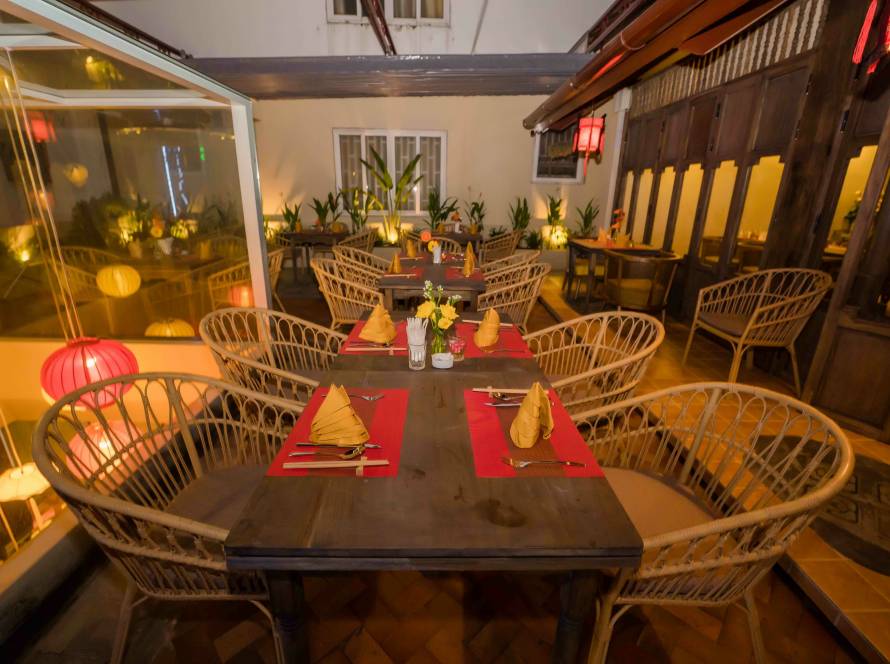Vietnamese cuisine is a vibrant reflection of the country’s diverse geography, culture, and history. Each region of Vietnam—from the temperate north to the sunny central coast and the tropical south—offers unique flavors and cooking techniques that tell a story of the land and its people. With its emphasis on fresh ingredients, balance of flavors, and harmony, Vietnamese cuisine has become a symbol of cultural pride and a global culinary treasure.
A Culinary Identity Rooted in Tradition
At the heart of Vietnamese cuisine lies rice, a staple of the country’s agricultural heritage. From steamed rice and rice noodles to rice paper and fermented rice products, this ingredient forms the foundation of countless dishes. The cuisine is also defined by its use of fresh herbs, minimal oil, and a delicate balance of flavors—sweet, sour, salty, bitter, and umami.


Vietnamese cooking is more than just food preparation; it’s a cultural expression. Meals are a time for families to gather, and traditional dishes are often imbued with symbolic meaning, particularly during festivals like Tết (Lunar New Year) and the Mid-Autumn Festival.
The Flavors of the North
Northern Vietnamese cuisine, centered around Hanoi and the Red River Delta, is known for its subtle and harmonious flavors. The temperate climate, with its four distinct seasons, shapes a culinary style that relies on fresh ingredients and mild seasoning. Dishes in the north often use diluted fish sauce, shrimp paste, and soy sauce, paired with an abundance of herbs and vegetables.
Signature northern dishes include:
- Phở: The iconic noodle soup with a clear, aromatic broth made from beef bones, ginger, and spices, served with rice noodles and thinly sliced meat.
- Bún Chả: Grilled pork served with rice noodles, fresh herbs, and a tangy dipping sauce.
- Nem Rán (Spring Rolls): Crispy rolls filled with minced pork, vegetables, and glass noodles, showcasing the region’s focus on texture and flavor balance.
Northern cuisine emphasizes simplicity, highlighting the natural taste of its ingredients while creating dishes that are satisfying and elegant.
Central Vietnam: Bold and Spicy
The cuisine of central Vietnam is marked by bold flavors and vibrant colors, reflecting the region’s challenging climate and royal culinary traditions. This area, home to the former imperial city of Hue, is known for its meticulous preparation and presentation, as well as its love for chili and fermented ingredients.

Key dishes from the central region include:
- Bún Bò Huế: A spicy beef noodle soup flavored with lemongrass, shrimp paste, and chili, representing the heartiness of Hue cuisine.
- Bánh Bèo: Small steamed rice cakes topped with minced shrimp, scallions, and crispy shallots.
- Mì Quảng: A turmeric-infused noodle dish served with shrimp, pork, peanuts, and herbs, reflecting the region’s resourceful use of local ingredients.
The royal influence in central cuisine is evident in its variety and complexity, with dishes often featuring layers of flavor that leave a lasting impression.
Southern Vietnam: Sweet and Abundant
Southern Vietnamese cuisine is shaped by its tropical climate and fertile Mekong Delta, which provide an abundance of fresh produce and seafood. Sweetness is a defining characteristic of southern dishes, achieved through the use of coconut milk, sugar, and tropical fruits.
Popular southern dishes include:
- Cá Kho Tộ: Caramelized fish cooked in a clay pot, balancing sweetness and savoriness.
- Canh Chua: A tangy and refreshing soup made with tamarind, pineapple, fish, and fresh herbs.
- Bánh Xèo: Crispy rice pancakes filled with shrimp, pork, and bean sprouts, served with fresh greens and dipping sauce.
Southern cuisine reflects the warmth and hospitality of its people, offering dishes that are generous in both flavor and portion size.
The Role of Herbs and Spices
Fresh herbs and spices are essential to Vietnamese cooking, adding aroma, flavor, and nutritional value to dishes. Common herbs like mint, basil, coriander, and dill are paired with spices such as star anise, cinnamon, and lemongrass to create dishes that are both vibrant and balanced.
Herbs are also used for their cooling or warming properties, creating harmony within meals. For example, spicy dishes are often paired with fresh, cooling greens to balance the palate.
A Global Culinary Treasure
In recent years, Vietnamese cuisine has gained international recognition for its health-conscious qualities and unique flavors. Iconic dishes like phở, bánh mì, and fresh spring rolls have become global favorites, showcasing the versatility and appeal of Vietnamese cooking.
Vietnamese restaurants worldwide emphasize fresh, authentic ingredients and traditional techniques, introducing diners to the culture and history behind each dish. This growing popularity has not only boosted Vietnam’s culinary reputation but also fostered cultural exchange and understanding.
Conclusion: A Celebration of Culture
Vietnamese cuisine is more than just food—it is a reflection of the nation’s identity, history, and traditions. From the subtle elegance of northern dishes to the fiery flavors of the central region and the sweet abundance of southern fare, each bite tells a story of the land and its people.
For those who wish to explore Vietnam’s rich culture, its cuisine offers a gateway to understanding the heart and soul of this vibrant country. It is a culinary journey worth savoring, one that leaves a lasting impression on both the palate and the spirit.




